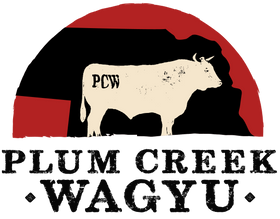A Year on the Ranch: The Lifecycle of Wagyu Cattle
Raising Wagyu cattle is both an art and a science, requiring meticulous care, nutrition, and attention to detail. Each stage of their life is crafted to ensure they grow healthy, stress-free, and ready to produce the highest-quality beef. Here’s a look at what a year on the ranch looks like for these remarkable animals.
The Early Months: Calving and Bonding
Wagyu calves are born after a gestation period of around nine months. From the moment they take their first steps, the focus is on nurturing and care. Calves stay close to their mothers, feeding on nutrient-rich milk to build their immune systems and grow strong. During this phase, ranchers ensure a calm and safe environment, free from stress or predators.
Growing Strong: The First Six Months
As the calves grow, they transition from milk to a carefully crafted diet of grasses, hay, and grains. Nutrition at this stage is critical, as it lays the foundation for the marbling that will develop later. Ranchers monitor their weight and health closely, ensuring the young cattle have ample space to roam and graze freely.
The Yearling Stage: Focused Nutrition and Care
At around six to twelve months, Wagyu cattle enter the yearling stage. This is when the transition to a specialized feeding regimen begins. Their diet includes high-quality grains, silage, and other ingredients tailored to enhance marbling. Regular check-ups, vaccinations, and health monitoring are part of the routine to keep the cattle thriving.
The Finishing Phase: Marbling Perfection
From twelve months onward, Wagyu cattle enter the finishing phase. This is where the magic of Wagyu’s famous marbling takes shape. The cattle are fed a high-energy diet rich in grains, which promotes the intramuscular fat that gives Wagyu beef its buttery texture. This phase lasts up to 300 days, with ranchers carefully balancing nutrition and comfort to ensure optimal results.
The Environment: Stress-Free Living
Throughout their lives, Wagyu cattle are raised in a low-stress environment. Clean water, ample shade, and gentle handling practices are priorities on the ranch. Stress-free living not only ensures the well-being of the cattle but also enhances the quality of the beef.
The Result: Exceptional Wagyu Beef
After 24 to 30 months, Wagyu cattle are ready for processing. Their carefully managed lifecycle results in beef with unparalleled marbling, tenderness, and flavor—a true testament to the dedication and expertise of the ranchers who care for them.
Related Posts
Sustainability in Wagyu Ranching: How Plum Creek Wagyu is Committed to the Environment
Explore how Plum Creek Wagyu is committed to sustainability with practices like rotational grazing, water conservation, humane treatment of cattle, and more. Learn about our efforts to produce high-quality beef while protecting the environment.
Wagyu Beef vs. Angus Beef: A Flavor Showdown
Discover the differences between Wagyu beef and Angus beef in this comprehensive showdown. Learn about flavor, texture, and the overall eating experience to determine which premium beef is right for you.
Wagyu Beef Recipes for Every Season: From Summer Grilling to Winter Braising
Explore seasonal Wagyu beef recipes perfect for any time of the year. From summer grilling to cozy winter braises, discover easy and delicious ways to incorporate premium Wagyu into your meals.
Health Benefits of Wagyu Beef: Why It's a Premium Choice
Discover the health benefits of Wagyu beef, from its heart-healthy monounsaturated fats to its higher levels of omega-3 fatty acids and CLA. Learn why Wagyu beef is a premium choice for those seeking a flavorful yet healthier alternative to traditional meats.
Pairing Wagyu Beef with Wines: A Guide to the Perfect Match
Discover expert tips on pairing Wagyu beef with the perfect wines. From Ribeye to Filet Mignon, explore the best wine matches to elevate your dining experience and make every bite of Wagyu beef unforgettable.
The History and Origins of Wagyu Beef: From Japan to Nebraska
Explore the rich history of Wagyu beef, tracing its origins from ancient Japan to the modern-day farms of Nebraska. Learn about the unique breeding practices and cultural significance of Wagyu, and discover how Plum Creek Wagyu brings this exceptional beef to your table.








